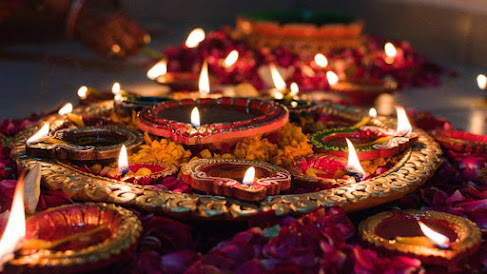 |
| essay on teej festival in nepal |
essay on teej festival in nepal
Women of the Hindu religion in Nepal celebrate Teej as a festival. It is widely observed in Nepal. Most of this festival's dates fall in the late monsoon season. The goddess Parvati and her marriage to Lord Shiva are the main subjects of the monsoon celebrations of Teej. A celebration of women is held during this holiday. They enjoy being women by dancing, singing, and playing. In this essay, we'll concentrate on Teej's impact on Nepal's way of life.
The month of Bhadra begins when evergreen Shrawan (July) comes to an end (August). Teej occurs in the month of Bhadra. The third day of every month, following the new and full moons, is referred to as teej. Although everyone in Nepal celebrates this event, Hindu ladies are the ones who observe it most frequently. On the occasion of Goddess Parvati's happy reunion with Lord Shiva, this Teej is dedicated to her.
Teej puts smiles on the faces of women in the towns and the rural, despite the fact that the women fast throughout the day, refusing to drink even a drop of water. Due to the busy schedules with farm work in the village, it is a rare occasion for many married women in Nepali villages to see their mothers. A day or two before the festival, the parents invite their girls over or arrange for someone to bring them. Before observing a fast on Teej, people contribute to the ritual food known as dar there. It's interesting to note that during this festival, no girl visits her mother unless they receive permission from her parents or brothers.
The festival is a three-day event that includes lavish feasts and day-long fasts. When her father pledged to give her daughter to Lord Bishnu for marriage, the Goddess Parvati is believed to have left her home with her friends, according to mythology. After escaping, she began fasting and prayed to Lord Shiva to grant her request to wed him. Soon after, Lord Shiva accepted to her proposal to marry her by uttering the word "Tathastu," which denoted his agreement. As a result, women also celebrate this Teej festival in the hopes of finding their ideal husband. For married women, the health of their husbands and kids is a cause for celebration during Teej.
Teej is already a three-day celebration. Dar Khane Din (the day of the feast), Brata Basne Din (the day of fasting), and Rishi Panchami are the three days of the Teej festival ( Homage to Saints ). The celebration day is the first day. Women dress up and groom themselves to look their best on this day. They gather in one spot and spend the day socializing, dancing, and singing religious music to their hearts' content. At this time, they also enjoy a grand feast. Men as well as women prepare the feast. Women are excused from working on this day and allowed to enjoy themselves.
Fasting Day is another name for Teej's second day. This is the day that ladies begin their 24-hour fast. Women visit Shiva temples dressed up and bring flowers and fruits as offerings. Women must strictly abstain from drinking any water or engaging in any eating activities on this day, however some do. Everything is done for their well-being and prosperity.
Due to the fast, it is also common to hear reports of women passing out from dehydration and heat exhaustion. Some individuals think drinking water during fasting is OK. The oil lamp, which needs to be lit all night, is a crucial component of the puja. It is said that a husband and family would experience tranquility and prosperity if they spend the entire night by the light of an oil lamp. Women apply mehendi as well ( Henna tattoos ). Many people think that this is done to express their intense love and affection for their loved ones, even though the religious motivation behind it is unclear. Additionally, it is said that men will love their wives more deeply the darker their henna tattoos are.
On the third day of Teej, people celebrate Rishi Panchami. Women visit the seven saints on this day, pray to the gods, and cleanse themselves. On this day, women are encouraged to pray to the gods and purge themselves of any traces of "being touched by men during menstruation."
The songs that ladies sing are the primary emphasis of this Teej festival. Despite the majority of the songs being devotionals, several of them capture the suffering of women. the issues and abuse they experience. The need for gender equality is becoming more widely recognized among the younger generations, and the Teej festival provides a forum for people to express their views. Even though the Teej festival is meant to be exciting, it is likely that this year's event won't be as large as previous ones.
